With Marvel still a few weeks away from new single issues returning to shelves, The Marvel Rundown is once again diving into a classic from the publisher’s back catalog. This week, we’re looking at creator John Byrne‘s tenure as writer and artist on Fantastic Four. Hot off a landmark run on the X-Men, Byrne’s work on the FF is often considered a high water mark for the team, a return to greatness and prominence for Marvel’s first superhero team. How well does the run hold up nearly forty years later?
Check out our look back at some of Byrne’s seminal run on Marvel’s first family in this week’s installment of The Marvel Rundown!
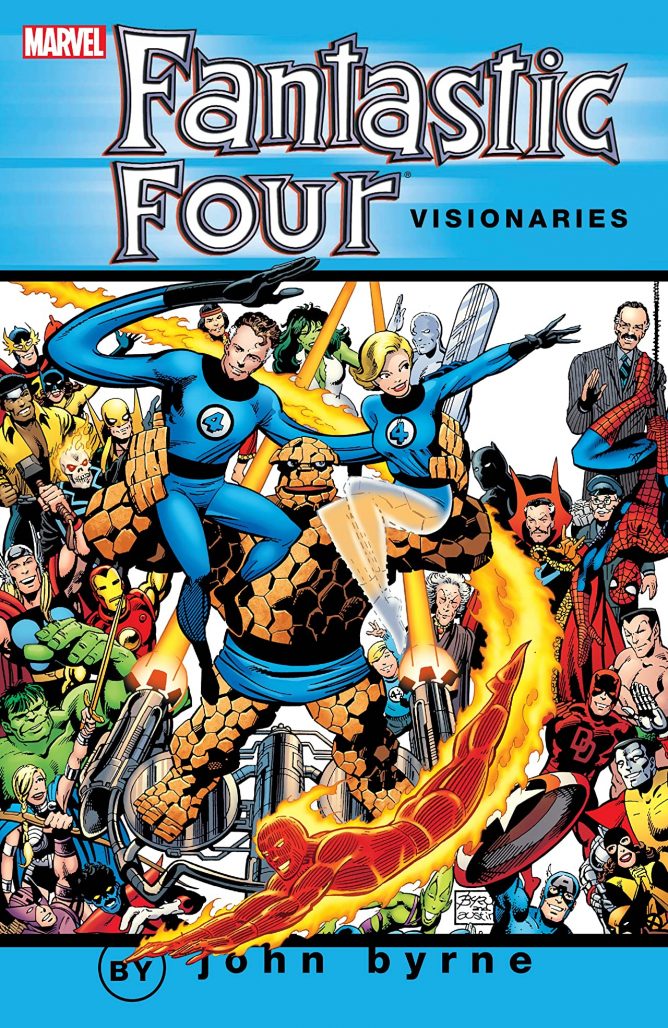
Fantastic Four Visionaries: John Byrne Vol. 1
Originally published in Fantastic Four #232-240
Written and illustrated by John Byrne
Colored by Glynis Wein & Bob Sharen
Color Reconstruction by Jason Lewis & Digikore
Lettered by Jim Novak & Jean Simek
Cover by John Byrne, Terry Austin, & John Kalisz
Reviewed by George Carmona 3rd
With new comics still a ways off, this week’s Marvel Retro Rundown is another deep dive into the long boxes as we continue to take advantage of Marvel’s free comics offering with Fantastic Four Visionaries: John Byrne Vol.1.
I jumped to the preadolescent days of my youth in 1981 to re-read this nine-issue collection, a perfect jumping-on point for fans that might be familiar with the Fantastic Four but aren’t experts on Marvel’s First Family.
Coming off his blazing hot run on the best selling X-Men as co-plotter and penciler, John Byrne took over the FF as a creative force, writing, penciling, and inking, backed up by colorists Glynis Wein and Bob Sharen and letterers Jim Novak and Jean Simek with ink assists on the covers by Terry Austin. At this point in comics, there were only a few other creators banging out books like this; Byrne had been doing it for years with his creator-owned books before Marvel, so he was already primed for being a comic machine working on 3-4 other titles as writer or penciler at the same time, including Alpha Flight which he also wrote, pencilled, and inked.
Re-reading I definitely felt the passion that Byrne has for the Marvel Universe in the crafting of his stories for this FF run. He takes a subtle tour of the Marvel Universe with guest stars like Dr. Strange and Nick Fury, sprinkling historical Marvel facts here and there, fighting off-brand foes like Hammerhead and Ego the Living Planet, and of course, regular FF rogues like Diablo, the Puppet Master, and Dr. Doom. This collection seeds a field of plots and helps to reimagine the Marvel landscape for years to come, moving the Inhumans to the Moon, setting up the newest Herald of Galactus, witnessing the birth of Quicksilver and Crystal’s baby girl, and introducing us, for the first time, to the Thing’s Sweet Aunt Petunia.
You can feel the influence of Jack Kirby’s style in the design of Reed Richards’ equipment, but Byrne’s work there as an artist is a master class in comics. Using the framework of the world created by Kirby and Stan Lee, from storytelling to costume aesthetics, Byrne gives the FF more of a natural look to their anatomy, though his major redesign doesn’t come for a while yet.
Like our previous review of X-Men: God Loves, Man Kills, I was struck by the amount of reading I had to do. There are a ton of caption boxes and word balloons. Byrne takes full advantage of Mr. Fantastic’s voluminous vocabulary to make him that perfect super scientist adventurer. Ben Grimm’s inner dialogue over being the Thing or his relationship with Alicia Masters, and Johnny Storm’s rocky romance with Frankie Raye (spoiler alert: it doesn’t last) also lend themselves to Byrne’s verbose scripting.
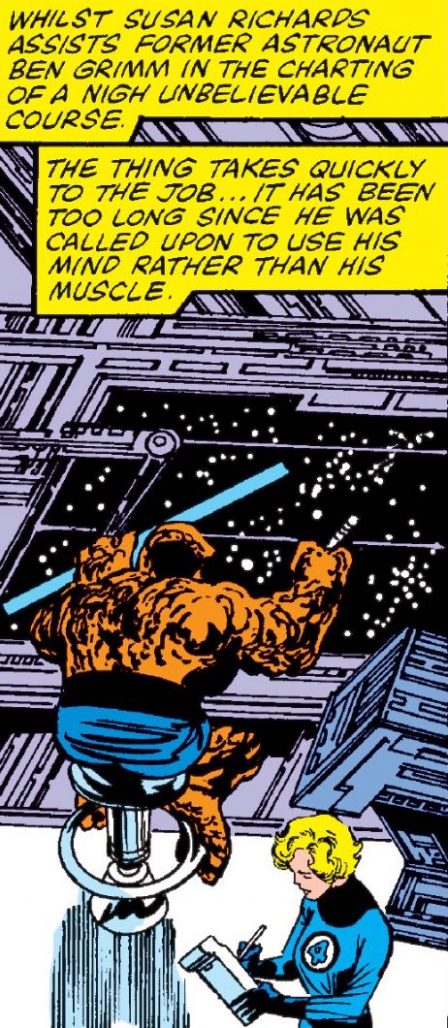
And in all of these over the top moments of this series, Byrne finds a way to create moments that showcase things that make these characters shine beyond their powers. With the panel at left, the writer/artist burned into my young impressionable mind a fact that’s always been there but very often overlooked: Ben Grimm is a world-class pilot and astronaut. In another, he showed that the Torch is an expert mechanic and electrician working on the Baxter Building’s advanced security systems.
If you’re a relatively new reader to the Fantastic Four, this Sue Richards might be completely unrecognizable reading her character through the lens of the 21st century. The Sue of this time is a doting wife and stereotypical damsel in distress, but Byrne makes some quiet moves towards priming Sue to become more of a powerhouse both emotionally and power-wise. The overall growth of Sue is a lasting testament to this run and the character (not counting that horrible costume that we don’t talk about). Having re-read these issues I’m very tempted to pull out my single-issue copies to continue her arc to see its conclusion.
At a glance, these nine issues can all be looked at as stand-alone stories with layered subplots, including the classic 20th-anniversary issue #236 containing the “Terror in a Tiny Town” story. In quite possibly one of the top ten most trifling moves in comics, Dr. Doom and the Puppet Master capture the Fantastic Four, strip them of their memories, and imprison them in a miniature town for their amusement. This single issue encapsulates everything that we love about the FF, but this is also the downside of this collection: you will only see a snapshot of what Byrne does to make this such a memorable run. But what a run it is.
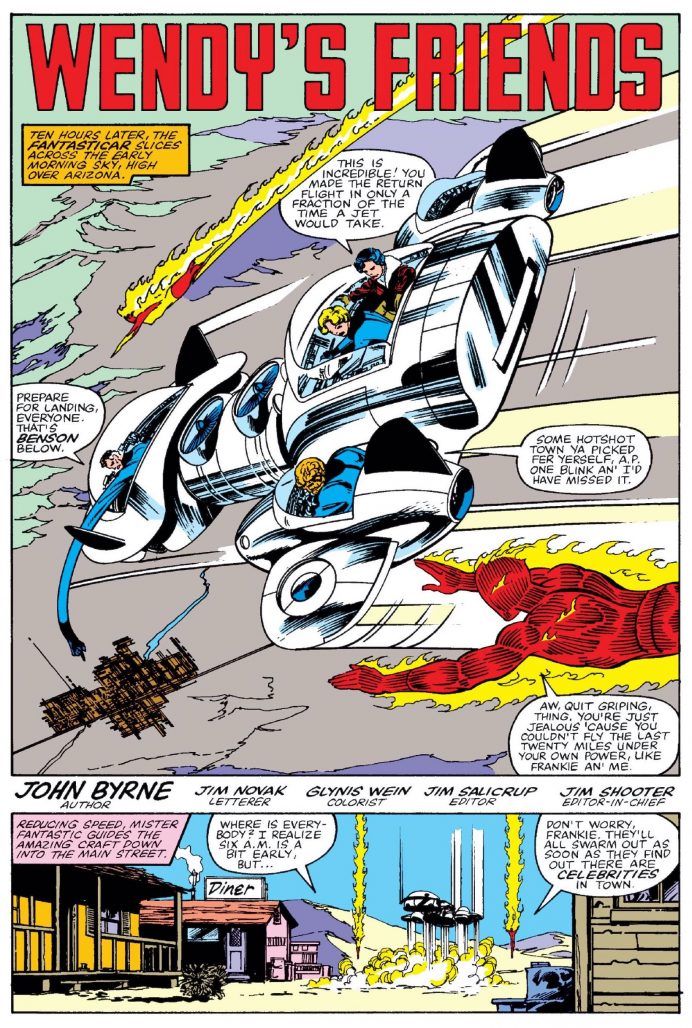
Next week, another look at a classic tale from Marvel history!



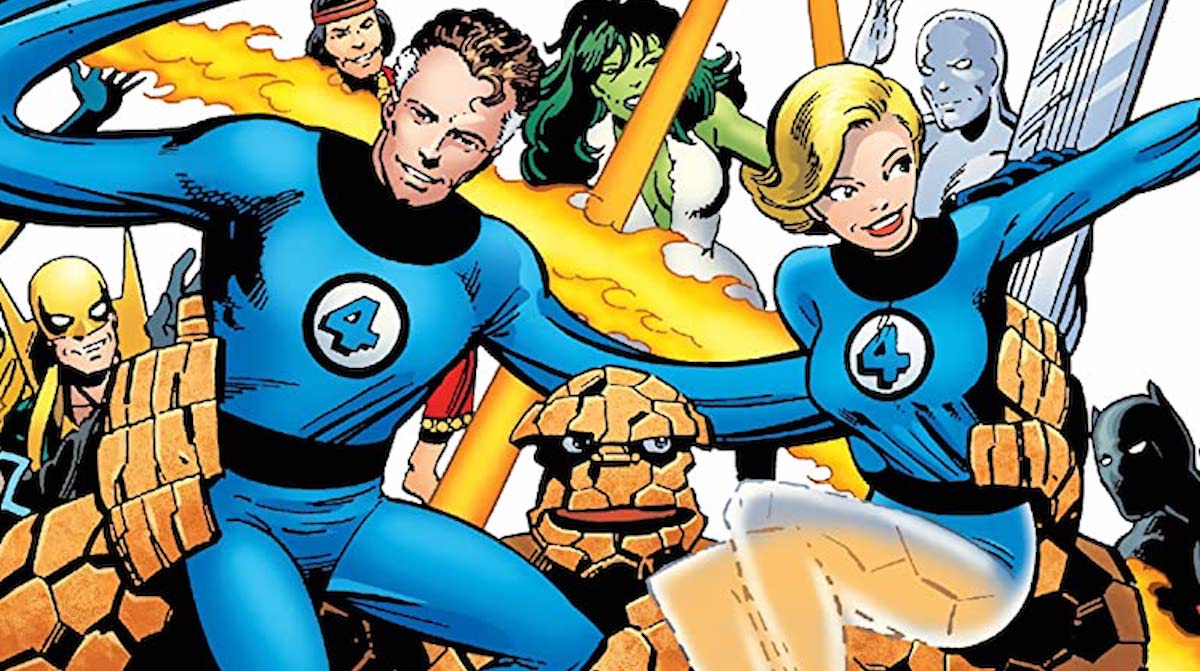

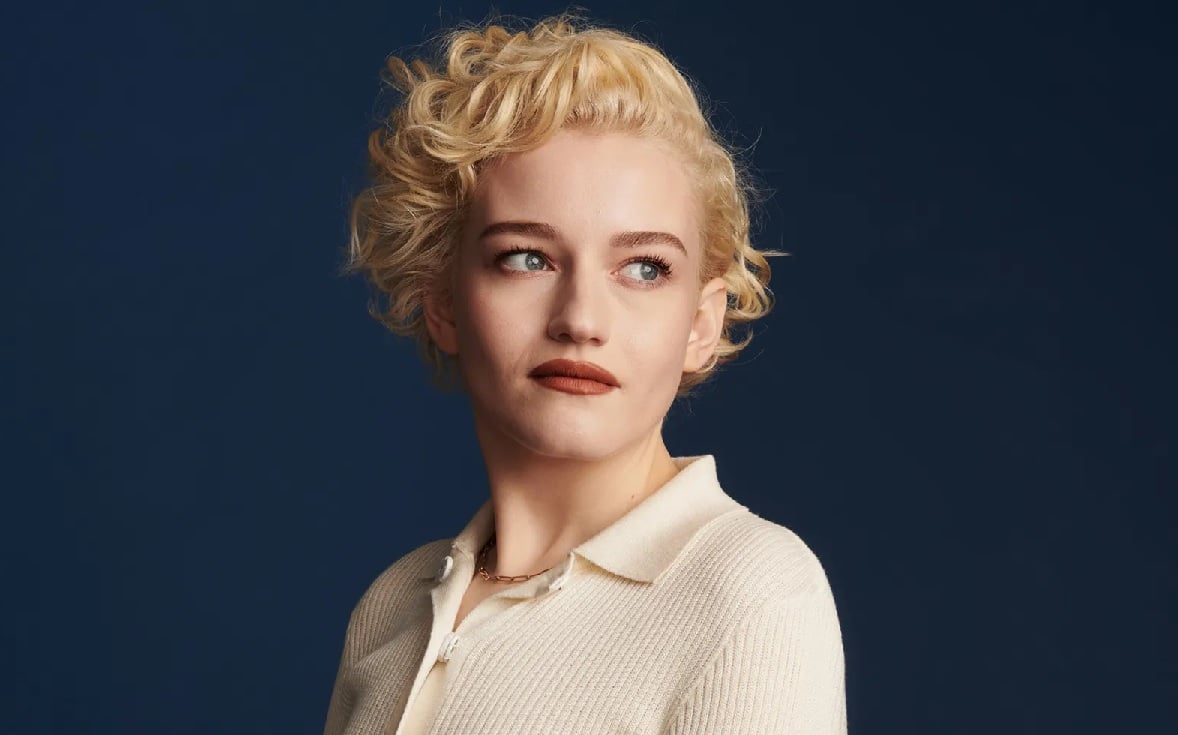
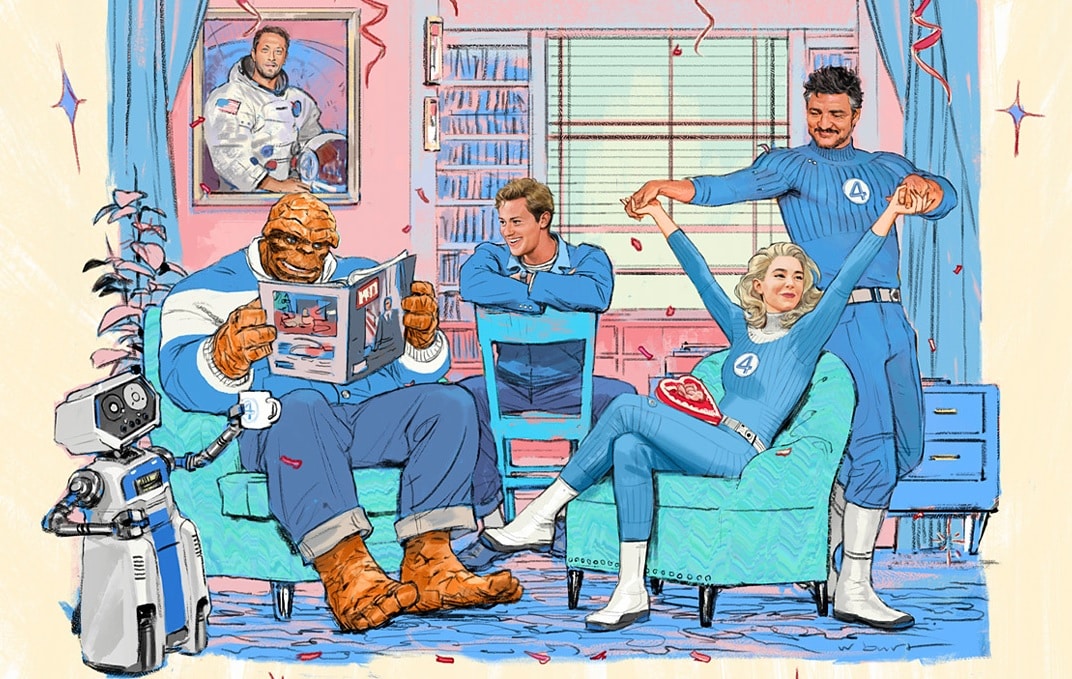






The Byrne run was the last time I read the FF. I regard it as the best work of his career. (I wasn’t crazy about his Superman.) When he left the FF in ’86, I dropped the book and never picked it up again.
When he took over it was a jarring contrast to what had been done before, but I enjoyed it. I think he was still adapting his artistic style to the new printing method all of the comics had adopted.
Every time someone wants to argue that the comic industry is healthy (before COVID-19, of course), I’m reminded that Byrne’s FF regularly sold triple and even quadruple what a normal top 10 comic sells today. And Byrne’s FF still normally sold less than Amazing Spider-Man or Uncanny X-Men.
Mike
While Byrne’s run has some entertaining stories, he ultimately added nothing new to the property; he just played with the toys that were already there. Byrne’s not alone in this; no one’s really moved the book forward since Jack Kirby left it.
Byrne took the FF “back to the basics,” using the first 20 Lee-Kirby issues as his model. He felt this was necessary after years of mediocre comics and recycled plots.
Moving the Inhumans to the moon and making Frankie Raye the herald of Galactus were the only big changes I recall. But it’s been a while since I’ve read those issues. Sounds like a good weekend reading project …
Comments are closed.